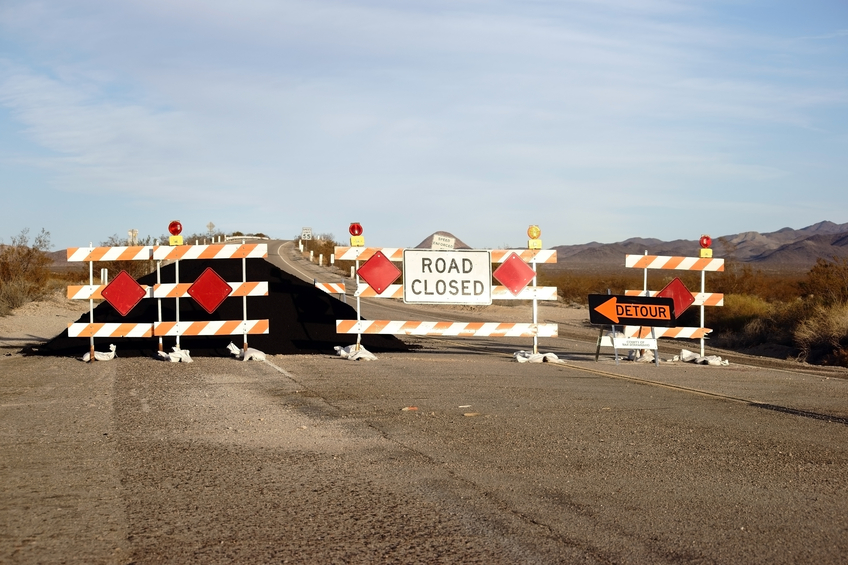Illinois Transportation and Laws/Rules/Ethics/Sexual Harassment 30 PDH Discount Package 2
Courses in this Package
Designing Traffic Signals (C03-023)
Geometric Design for Roads, Streets, Walks and Open Storage Areas (C03-018)
Low-Cost Treatments for Horizontal Curve Safety (C08-020)
Minimum Retroreflectivity Levels for Blue and Brown Traffic Signs (C04-046)
Roundabout Geometric Design (C04-004)
Signal Timing Optimization (C05-005)
Sexual Harassment Prevention for Illinois Professionals (IL1-001)
Engineering Laws, Rules, and Ethics for Illinois Professional Engineers (IL2-001)

This online engineering PDH course describes principals used in the design of traffic signals. Included in this course is a discussion of support selection, signal head placement, detection design, and the selection of signal control and timings. A general step-by-step procedure is presented for preparing a set of traffic signal design plans.
This 3 PDH online course is intended for traffic engineers and transportation design professionals who are involved in planning and designing traffic signals.
This PE continuing education course is intended to provide you with the following specific knowledge and skills:
- Learning about the various types of intersections where signal control is used
- Familiarizing with traffic signal plans preparation issues using a sample intersection
- Understanding the design of the pedestrian system at a signalized intersection
- Learning how signal heads are located using a sample intersection
- Understanding signal head sight distance requirements
- Understanding the three basic types of signal control: fixed time, semi-actuated, and fully actuated
- Familiarizing with the design issues relative to the provision of electric power
- Understanding the layout of the vehicle detection system
- Learning about required timing intervals and how they are determined
- Understanding the design features used to accommodate individuals with special needs
In this professional engineering CEU course, you need to review the course document titled, "Designing Traffic Signals".
Upon successful completion of the quiz, print your Certificate of Completion instantly. (Note: if you are paying by check or money order, you will be able to print it after we receive your payment.) For your convenience, we will also email it to you. Please note that you can log in to your account at any time to access and print your Certificate of Completion.

This online engineering PDH course refers to military design requirements and objectives and provides guidance on the general provisions and geometric design criteria for the design of roads, streets, bridges, walks, parking, residence drives and storage areas. It discusses how geometric design deals with the dimensions of the visible features of a facility such as alignment, sight distances, widths, slopes, and grades.
This 3 PDH online course is applicable to civil and traffic engineers, technical professionals and construction personnel who are interested in gaining a better understanding of geometric design for roadways, walkways and open storage areas.
This PE continuing education course is intended to provide you with the following specific knowledge and skills:
- Understanding the purpose, scope and definitions of geometric design
- Understanding the general provisions for access highway and installation highway design
- Understanding the design basis for roads, streets and storage areas
- Understanding the principles of geometric design for underpass roadways, bridges, walks, parking and residence drives
In this professional engineering CEU course, you need to review the course document titled "General Provisions and Geometric Design for Roads, Streets, Walks and Open Storage Areas" prepared by the Department of Defense, Unified Facilities Criteria Publication "UFC 3-250-18FA", January 2006.
Upon successful completion of the quiz, print your Certificate of Completion instantly. (Note: if you are paying by check or money order, you will be able to print it after we receive your payment.) For your convenience, we will also email it to you. Please note that you can log in to your account at any time to access and print your Certificate of Completion.

This online PDH course primarily covers engineering countermeasures for horizontal curve safety that are relatively low-cost, such as signage and pavement markings.
This course is intended to provide information specifically relating to lower volume two-lane roads and the agencies that manage them. It will help transportation agencies and their crews understand the available countermeasures and how to select and apply them.
This 8 PDH online course is applicable to traffic engineers, local transport agencies, design professionals and personnel who wish to understand the available horizontal curve safety countermeasures and how to select and apply them.
This PE continuing education course is intended to provide you with the following specific knowledge and skills:
- Learning about the two components of safety improvements
- Familiarization with the markings, signs, and pavement countermeasures that are used to improve horizontal curve safety
- Addressing the importance of roadside conditions and improvement opportunities
- Familiarization with the possible means of improving intersections
Upon successful completion of the quiz, print your Certificate of Completion instantly. (Note: if you are paying by check or money order, you will be able to print it after we receive your payment.) For your convenience, we will also email it to you. Please note that you can log in to your account at any time to access and print your Certificate of Completion.

This online engineering PDH course describes the research activities and consequent findings related to the development of recommendations for maintained retroreflectivity (MR) levels for white-on-blue signs and white-on-brown signs. It also includes an investigation related to MR levels needed for complex visual conditions that include glare from oncoming headlamps and fixed roadway lighting.
In 2003, the Federal Highway Administration published research recommendations for minimum MR levels for traffic signs. The recommendations included most sign types but not white-on-blue signs or white-on-brown signs. In addition, the 2003 MR levels were based on conditions representing dark rural environments.
This 4 PDH online course is applicable to all traffic engineers, transportation planners, sign manufacturers and all personnel interested in learning about or who are involved in the planning and determination of minimum retroreflectivity levels for traffic signs.
This PE continuing education course is intended to provide you with the following specific knowledge and skills:
- Understanding research objectives and activities
- Learning about minimum retroreflectivity, glare and surround complexity
- Understanding the experimental variables, luminance levels and environmental conditions
- Evaluating experimental results of white-on-blue signs vs. white-on-brown signs
- Learning about the luminance threshold levels and minimum retroreflectivity levels
In this professional engineering CEU course, you need to review the Federal Highway Administration (FHWA) no. FHWA-HRT-08-029, "Minimum Retroreflectivity Levels for Blue and Brown Traffic Signs", April 2008.
Upon successful completion of the quiz, print your Certificate of Completion instantly. (Note: if you are paying by check or money order, you will be able to print it after we receive your payment.) For your convenience, we will also email it to you. Please note that you can log in to your account at any time to access and print your Certificate of Completion.

This online engineering PDH course presents the fundamental design principles common among all roundabout types. This course also presents detailed design considerations specific to multilane roundabouts, rural roundabouts, and mini-roundabouts.
Designing the geometry of a roundabout involves choosing between trade-offs of safety and capacity. Roundabouts operate most safely when their geometry forces traffic to enter and circulate at slow speeds. Horizontal curvature and narrow pavement widths are used to produce this reduced-speed environment. Conversely, the capacity of roundabouts is negatively affected by these low-speed design elements. As the widths and radii of entry and circulatory roadways are reduced, the capacity of the roundabout is also reduced.
Furthermore, many of the geometric parameters are governed by the maneuvering requirements of the largest vehicles expected to travel through the intersection. Thus, designing a roundabout is a process of determining the optimal balance between safety provisions, operational performance, and large vehicle accommodation.
This 4 PDH online course is applicable to traffic engineers, transportation planners, managers, and other technical professionals who are involved in the geometric design of roundabouts.
This PE continuing education course is intended to provide you with the following specific knowledge and skills:
- Familiarizing with the different types of roundabouts
- Understanding the geometric elements
- Learning the general design principles
- Selecting the appropriate inscribed circle diameter
- Designing the alignment of approaches
- Designing entry and exit curves
- Designing the central and splitter islands
- Determining the stopping and intersection sight distances
- Designing methods to avoid vehicle path overlap
In this professional engineering CEU course, you need to review Chapter 6, "Geometric Design", of the Federal Highway Administration Publication FHWA-RD-00-067, "Understanding Roundabouts".
Upon successful completion of the quiz, print your Certificate of Completion instantly. (Note: if you are paying by check or money order, you will be able to print it after we receive your payment.) For your convenience, we will also email it to you. Please note that you can log in to your account at any time to access and print your Certificate of Completion.

This online engineering PDH course examines various cost-effective techniques that can be used to generate good signal timing plans that can be employed when there are insufficient financial resources to generate the plans using conventional techniques. This course develops a "tool box" of procedures and provides examples of how the tool box can be used when there is a moderate signal timing budget, when there is a modest signal timing budget, and when there is a minimum signal timing budget.
The conventional approach to signal timing optimization and field deployment requires current traffic flow data, experience with optimization models, familiarity with the signal controller hardware, and knowledge of field operations including signal timing fine-tuning. Developing new signal timing parameters for efficient traffic flow is a time-consuming and expensive undertaking.
This 5 PDH online course is applicable to traffic engineers and planners, administrators, managers, and technicians who are trying to maintain the best possible signal timing settings and adjustments to meet the ever-increasing traffic demands with less than optimal budgets.
This PE continuing education course is intended to provide you with the following specific knowledge and skills:
- Identifying system intersections
- Collecting and organizing existing data
- Conducting a site survey
- Obtaining turning movement data
- Calculating local timing parameters
- Identifying signal groupings
- Calculating coordination parameters
- Installing and evaluating new plans
In this professional engineering CEU course, you need to review the Federal Highway Administration Publication FHWA-HOP-07-006, "Signal Timing on a Shoestring".
Upon successful completion of the quiz, print your Certificate of Completion instantly. (Note: if you are paying by check or money order, you will be able to print it after we receive your payment.) For your convenience, we will also email it to you. Please note that you can log in to your account at any time to access and print your Certificate of Completion.

This online PDH course presents a training on sexual harassment prevention in order to adopt and actively implement policies that ensure that workplaces are safe for employees to report and express their concerns about sexual harassment.
The Illinois Human Rights Act makes it a civil rights violation “[f]or any employer, employee, agent of any employer, employment agency or labor organization to engage in sexual harassment.” 775 ILCS 5/2-102(D).
The Illinois General Assembly finds that tolerance of sexual harassment has a detrimental influence in workplaces by creating a hostile environment for employees, reducing productivity, and increasing legal liability. Therefore, every employer in the State of Illinois is required to provide employees with sexual harassment prevention training that complies with section 2-109 of the Illinois Human Rights Act (“IHRA”).
This 1 PDH online course is applicable to professionals licensed in the State of Illinois and who are required to demonstrate continuing professional competency in sexual harassment prevention training as a condition of their license renewal.
This PE continuing education course is intended to provide you with the following specific knowledge and skills:
- Gaining an overview of sexual harassment prevention consistent with the Illinois Human Rights Act
- Familiarizing with types of unlawful sexual harassment, unwelcome behavior and working environment
- Learning about examples of conduct that may constitute unlawful sexual harassment
- Understanding sexual harassment in online environments
- Understanding employer responsibilities in the prevention, investigation, and corrective measures on sexual harassment
- Familiarizing with the Federal and State statutory laws concerning sexual harassment including remedies available to victims
Upon successful completion of the quiz, print your Certificate of Completion instantly. (Note: if you are paying by check or money order, you will be able to print it after we receive your payment.) For your convenience, we will also email it to you. Please note that you can log in to your account at any time to access and print your Certificate of Completion.

This online engineering PDH course presents the laws and rules of ethics and professional responsibility governing the practice of engineering in the State of Illinois.
Engineering ethics is (1) the study of moral issues and decisions confronting individuals and organizations involved in engineering and (2) the study of related questions about moral conduct, character, ideals and relationships of peoples and organizations involved in technological development (Martin and Schinzinger, Ethics in Engineering).
Excerpts from the Professional Engineering Practice Act of 1989, 225 ILCS 325 and the Illinois Administrative Code, Part 1380, which relate to the rules of profession conduct, continuing education requirements, proper use of seal and other pertinent regulatory provisions are presented in this course.
This 2 PDH online course is applicable to Professional Engineers licensed in the State of Illinois who are required to demonstrate continuing professional competency in the Illinois Laws, Rules and Ethics as a condition of license renewal. For each renewal period, every licensee must complete thirty (30) professional development hours, at least one (1) of the 30 hours must be in professional ethics and one (1) of the 30 hours must be in the laws and rules regulating the practice of engineering in the State of Illinois.
This PE continuing education course is intended to provide you with the following specific knowledge and skills:
- Familiarizing with the laws and rules regulating the practice of engineering in the State of Illinois
- Learning about engineering ethics, the rules of professional conduct and responsibility
- Understanding the role of the Illinois Board and its disciplinary authority
- Understanding the continuing education requirements in the State of Illinois
- Gaining an overview of disciplinary cases, violations and their corresponding penalties imposed by the Illinois Board
Upon successful completion of the quiz, print your Certificate of Completion instantly. (Note: if you are paying by check or money order, you will be able to print it after we receive your payment.) For your convenience, we will also email it to you. Please note that you can log in to your account at any time to access and print your Certificate of Completion.